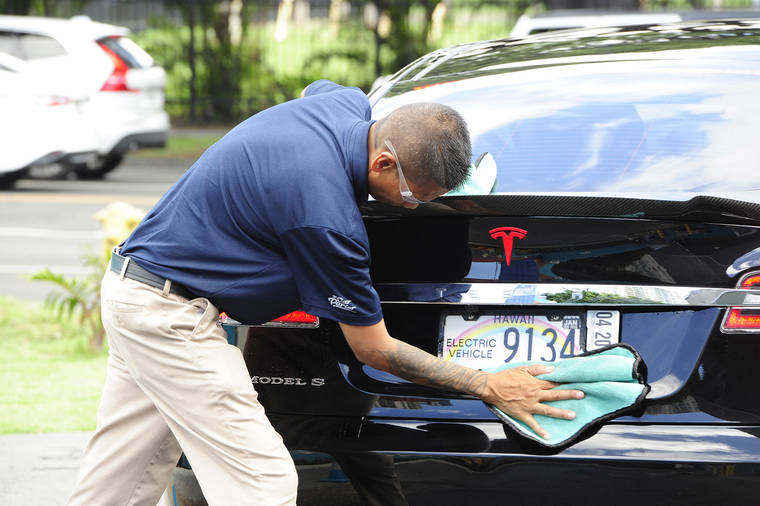With its relatively short driving distances, Hawaii seems the perfect place for speedy transition to ground transportation dominated by electric vehicles powered by renewable resources, thereby aligning with the state’s push to reduce its dependence on petroleum-based fuel.
Making a compelling case for gains at a brisk pace are findings in a new University of Hawaii study by Katherine McKenzie, a faculty member with UH’s Hawaii Natural Energy Institute. Under its most ambitious scenario, by 2050, faster adoption of EVs and faster generation of renewable energy would result in 99% less fossil fuel consumed and 93% less CO2 emissions from passenger and freight vehicles on Oahu.
However, while this scenario points to a path for fending off a growing climate change threat, EVs currently make up a tiny percentage of the vehicles on our roads. To effect a widespread switch in under three decades to clean energy vehicles powered by solar, wind or other renewables, the state, in tandem with counties, should frame a clear strategy that steadily marches EV implementation forward.
Following the 2015 enactment of a state law to generate 100% of electricity sales from renewable resources by 2045, the counties signed off on an aspirational EV target — shifting ground transportation fleets to use only renewable fuel sources by 2035 in all counties except Hawaii County, which set a 2045 goal. State and county leaders must now weigh mandating firm incremental benchmarks toward realizing EV objectives.
That includes passage of forward-thinking laws to accelerate public- and private-sector EV adoption and expand the reach of public charging infrastructure, which is growing yet still woefully inadequate. And the Hawaii Electric Vehicle Association and other EV backers have rightly noted that more electrification hinges on vehicle affordability.
To that end, it’s encouraging that several automakers are expanding offerings — and announcing plans to phase out petro-powered cars and trucks. According to a recent Consumer Reports roundup, nearly 100 pure battery electric vehicles are slated to debut by the end of 2024 if all goes according to plan. Among the latest models with the longest range per charge, are a few in the “more affordable” bracket with ranges of nearly 260 miles.
Hawaii must do more to prep for a future in which base price affordability — along with lower ownership costs — deliver more EVs to our transportation inventory. Only about 1% of the roughly 1 million registered passenger vehicles statewide are EVs. But signaling a change in transportation trends, in 2020, EV registrations here increased by 21.3% while gas cars went down by 3%, according to Blue Planet Foundation, a nonprofit focused on renewable energy use in the islands.
Last month, Gov. David Ige signed into law bills that support clean ground transportation. Among them: One sets a goal for state agencies to transition 100% of light-duty vehicles in their fleets to zero-emissions vehicles by late 2035; another allocates a portion of the state’s barrel tax revenues to a rebate program for installation of EV charging systems. Both are modest steps toward environmental and economic gains, as reduced reliance on imported fuels holds potential to keep more transportation-related dollars in local circulation.
Still, bolder strides are needed to reap benefits tied to the fast-track transition to electric passenger and freight vehicles and renewable power generation as mapped out by UH researcher McKenzie. Her study, published in World Electric Vehicle Journal, created mathematical models of four scenarios based on transition projections.
The ugly upshot of slow-paced movement: billions more gallons of gasoline consumed and tens of millions more tons of CO2 emitted.

